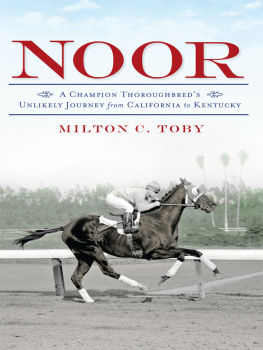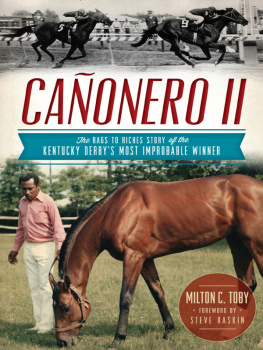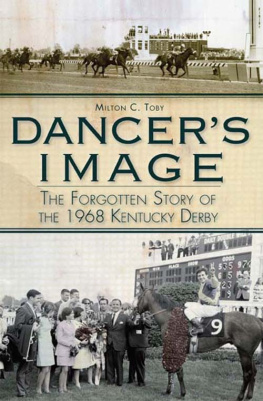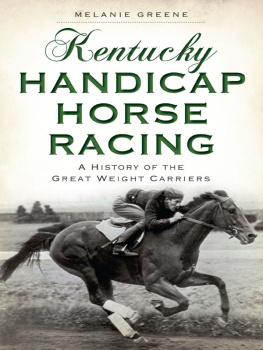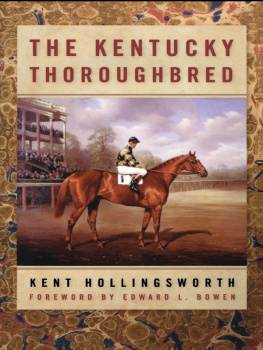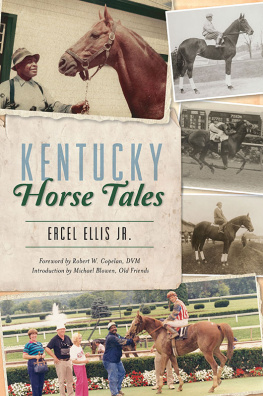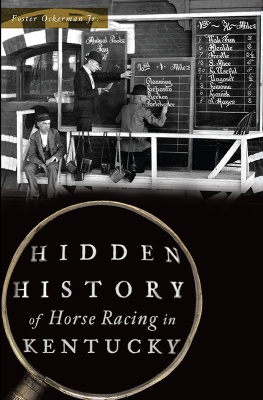

Published by The History Press
Charleston, SC 29403
www.historypress.net
Copyright 2012 by Milton C. Toby
All rights reserved
First published 2012
e-book edition 2012
ISBN 978.1.61423.669.6
print ISBN 978.1.60949.561.9
Library of Congress CIP data applied for.
Notice: The information in this book is true and complete to the best of our knowledge. It is offered without guarantee on the part of the author or The History Press. The author and The History Press disclaim all liability in connection with the use of this book.
All rights reserved. No part of this book may be reproduced or transmitted in any form whatsoever without prior written permission from the publisher except in the case of brief quotations embodied in critical articles and reviews.
CONTENTS
ACKNOWLEDGEMENTS
Theres an irony inherent in the lengthy process that develops the germ of an idea into a finished book. The writing itself is a very solitary endeavor, and an author facing a blank sheet of paperor more likely these days, a keyboard and a blank computer screenfaces it alone. But other people are involved at every stage, and their involvement is essential to the success of the project.
Topping that list of people, lengths in front of everyone else, is Charlotte Farmer.
Its often said that a book would not have been possible without the help of a spouse, a friend, a colleague, a herosomeone. That sentiment is literally true when it comes to Charlotte Farmer and the story of Noor. Charlotte championed the preservation and recognition of Noors burial site in Northern California singlehandedly for a while. Later, when the prospect of commercial development threatened the site and her objective shifted to locating Noors remains and moving them to a more secure location, she began recruiting others to help. Both friends and strangers alike usually found it impossible to say No to one of Charlottes requests.
Ariadne Delon Scott summed up what everyone I talked with said of Charlotte: Without her, none of this would have happened.
They were right.
She provided invaluable assistance with research for this project, and she was kind enough to share her address book when I needed contacts to add an important bit of information to the story. She worked tirelessly without any sort of personal agenda, and her only request was that the book would, in some way, benefit Old Friends, the Thoroughbred retirement farm in Central Kentucky where Noor was reburied last summer. To that end, a portion of the proceeds from the sales of this book will be donated to Old Friends.
Cathy Schenck in particular, and the staff at the Keeneland Library in general, provided invaluable reference material and assistance. The Keeneland Library is home to what must be the most complete archive of the Daily Racing Form on the planet, along with an astounding collection of books, magazines and photographs related to Thoroughbred racing. By its own count, the library houses more than 10,000 volumes, 1,500 videocassettes, 225,000 photo negatives and 3,000 files containing thousands of newspaper clippings. The prospect of compiling any sort of historical narrative about the sport without utilizing the resources of the Keeneland Library would be daunting.
I also had access to reference material and photographs in the files of the Thoroughbred Times and the Blood-Horse. Special thanks to Mary Simon, who took time from her real work to help locate articles and images. And because of a years-long research project by Charlotte Farmer, I had easy access to the Los Angeles Times, the San Francisco Examiner and the San Francisco Chronicle, all without a trip to the West Coast.
Others who deserve special mention include Edward Kip Hannan and Bill Mochon.
Kips official job title is supervisor of production operations in the Television Department at Betfair Hollywood Park in California. Informally, though, he spends an extraordinary amount of time locating and restoring the photographic history of racing in Southern California. He provided restored copies of newsreel, promotional and film patrol versions of the 1950 Hollywood Gold Cup; a stack of eight-by-ten glossy photographs; negatives that may not have seen the light of day for more than sixty years; and an audio recording of the actual radio broadcast of the race. You can see a sample of Kips work, a short newsreel clip of the Gold Cup and images of Noor looking hale and hearty after his retirement, on YouTube (http://www.youtube.com/watch?v=ITp4K8o55kI). The image of Noor on the cover of this book was reproduced from one of the negatives unearthed by Kip. Its possible that this image was never printed and is being seen for the first time.
Bill has been photographing at West Coast tracks for decades. When he discovered, by accident, that thousands of photographic negatives from racings golden age were being tossed out in the trash, he stepped in and rescued them. Bill Mochon Archival Photo is the repository for the negatives, from which he generously provided prints documenting the Santa Anita Handicap.
Thankfully, Kip and Bill understand that a photograph really is worth a thousand words and that once historical images are lost, theyre gone forever.
Archaeologists Erin Dwyer and Denise Jaffke worked on the dig at Loma Rica. Denise shared her photographs of the excavation, and they both helped me understand how you locate and exhume the remains of a horse that was buried almost forty years ago. Its not as easy as it sounds.
Several members of Burley Parkes family, including Gary Parke and Don Bosley, shared valuable recollections of their father. Thanks, Gary, for the nifty hat emblazoned with Noors name and the GPS coordinates for his burial site at Old Friends.
Dan Silvestri, owner of Impact Photography in Lexington, Kentucky, helped with restoration of some of the negatives I received from Kip Hannan, including the photograph on the cover.
Michael Blowen, owner of Old Friends, spent an afternoon talking about the retirement farm and how Noors remains ultimately found a final resting place in Georgetown, Kentucky.
Veteran turf writer Jon White shared a story about Noors jockey, John Longden, and pointed me in the direction of other sources.
Will McKay, my editor at The History Press, had faith in the idea that the story of a champion Thoroughbred racehorse that hardly anyone remembered and an energetic woman in California who resurrected his memory was worthy of a book. Everyone at the Charleston, South Carolina publishing house has been wonderful to work with from start to finish.
Finally, the support from my wife, Roberta, was unwavering. The only thing more difficult than actually writing a book might be living with someone who is!
INTRODUCTION
A few minutes after sunrise on a foggy West Texas highway, a Greyhound bus piloted by a substitute driver rushing to make up lost time slammed head-on into an automobile driven by golfer Ben Hogan. In the split second before impact, Hogan flung himself across the passenger seat to protect his wife, Valerie. The instinctive decision saved Hogans life, but the Cadillac was demolished in the collision, and the golfer sustained serious injuries. Complications set in early on, and for a time it was not at all clear whether Hogan would ever play golf again.
The year was 1949, and one of the worlds best golfers was out of action for the foreseeable future, maybe forever.
Next page
